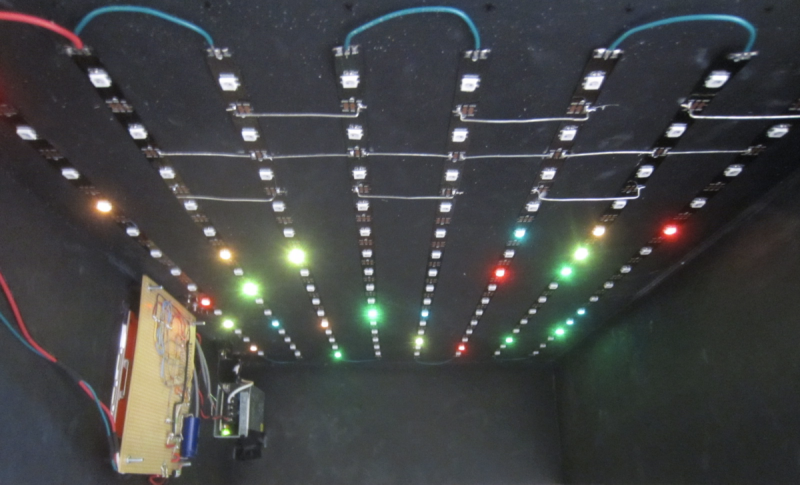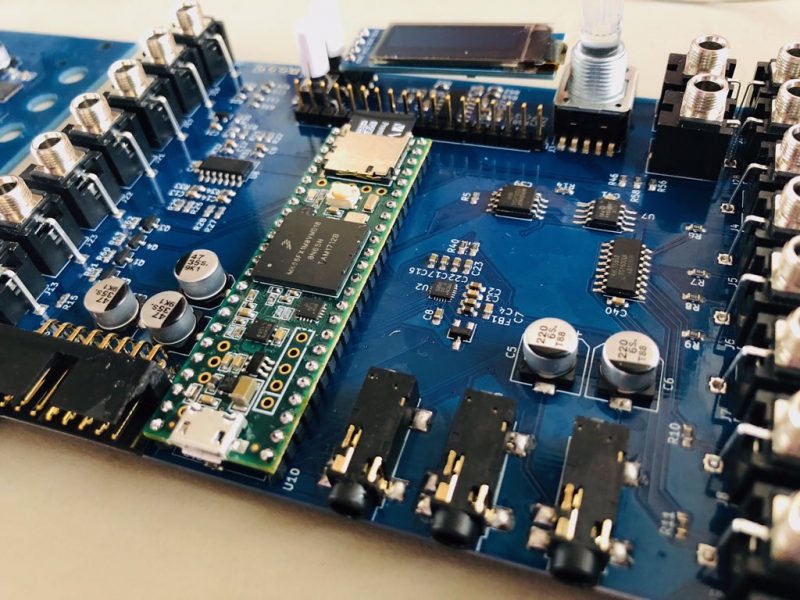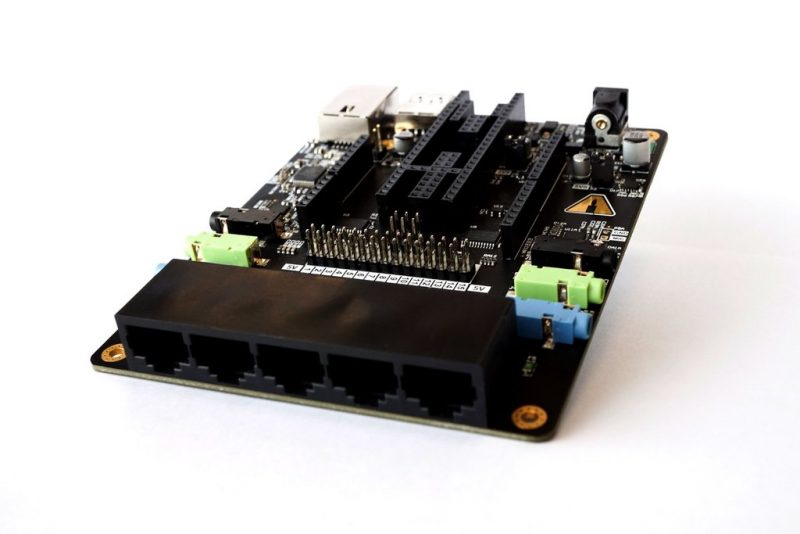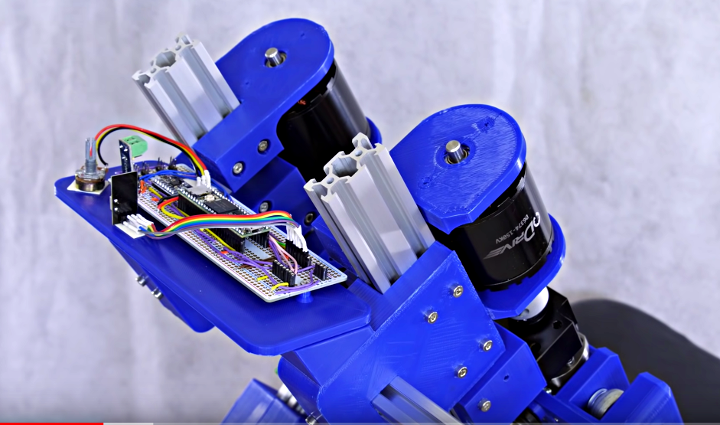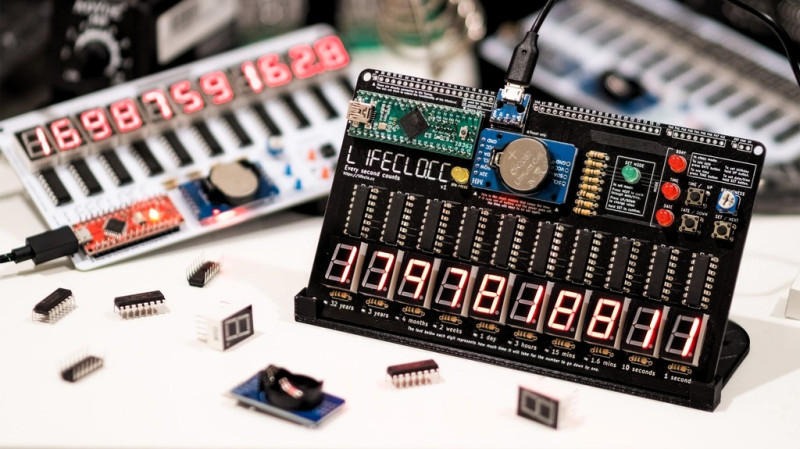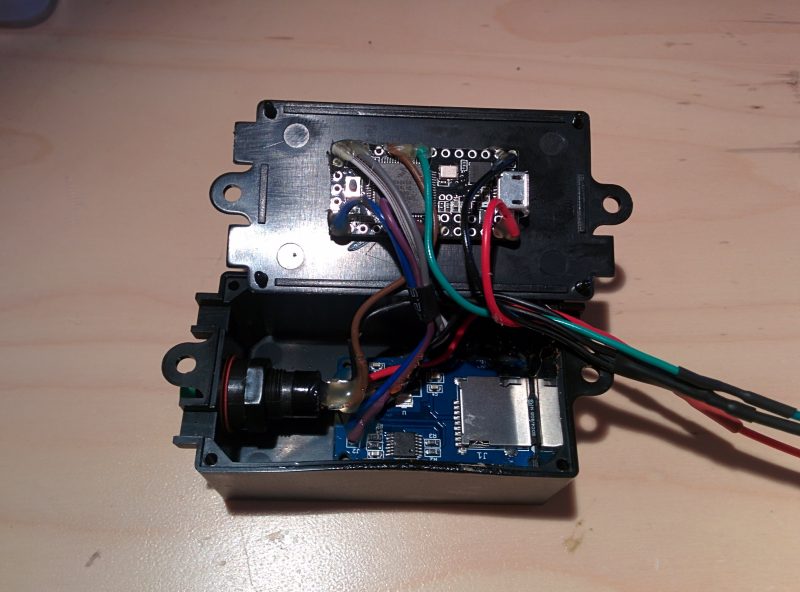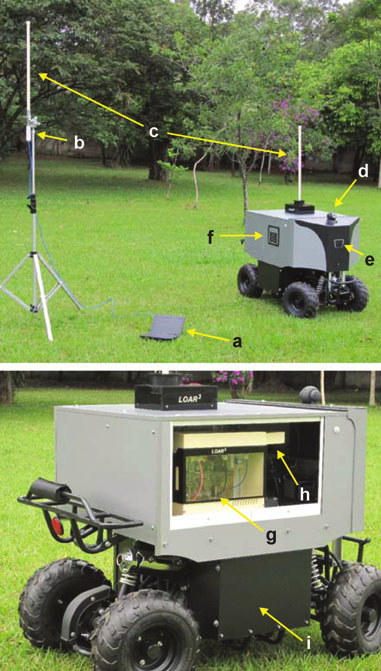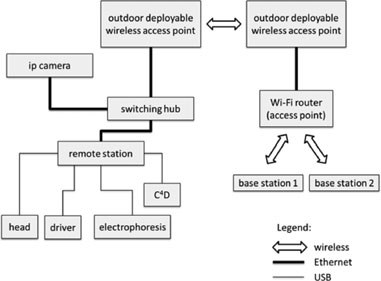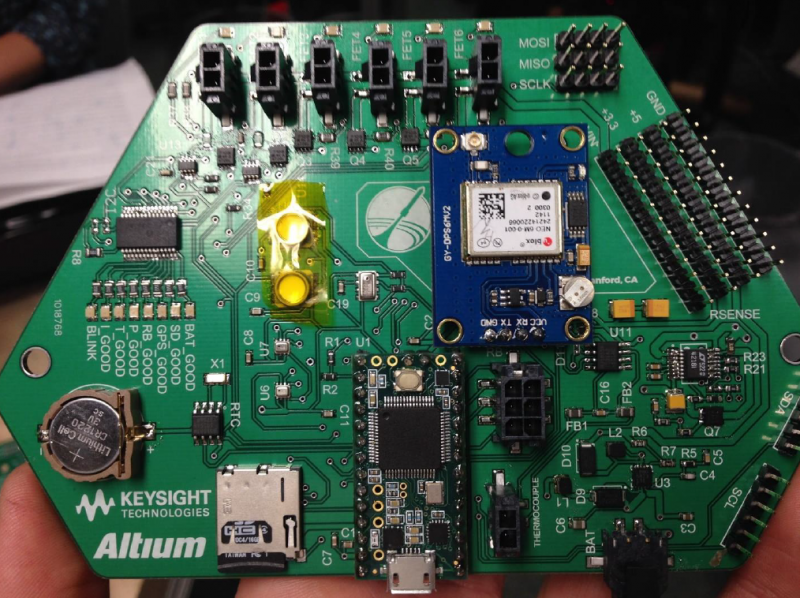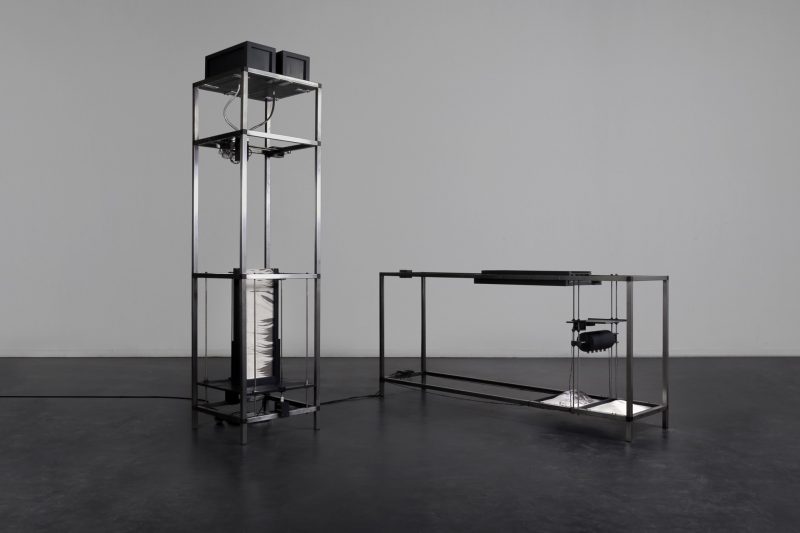Craig Lindsay has made a color organ that syncs colorful lights to music using a Teensy 3.1 and the Teensy audio library.

Color organs (also known as light organs) are popular DIY projects for makers who want to play with light and sound. A typical color organ will separate an audio signal into frequency bands, controlling a number of light channels based on the level of each of these frequency bands. Craig Lindsay has taken this idea as inspiration and designed a refined, reliable and feature-packed version of his own.
Lindsay uses a Teensy 3.1, a Teensy Audio Adapter, 120 WS2812B RGB LEDs and a touch screen to make a digital color organ that uses digital signal processing (DSP) instead of the more usual (and less reliable) analog filtering.
An extremely detailed and very helpful write up of the project is available on Lindsay’s website (PDF) , where you can find schematics, component lists, build logs, images of the work in progress, and a list of the libraries required to replicate this color organ. You can also read an article about it in the Nuts and Volts magazine.
